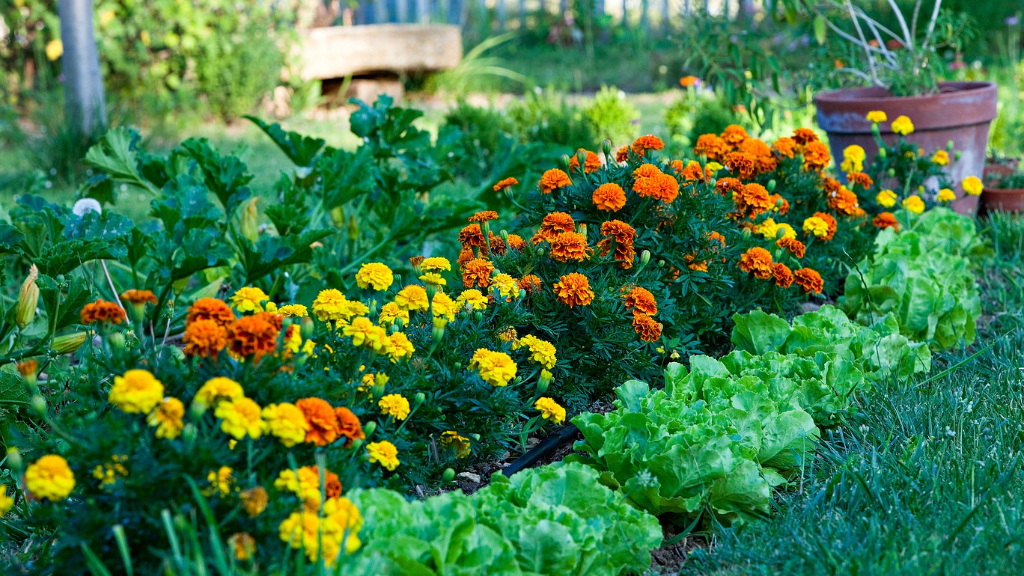Pros And Cons Of Companion Planting


There are so many great reasons for companion planting and so many benefits for your garden that it's hard to think of reasons why you wouldn't. From natural pest control to improving soil quality and just making your beds look nicer, companion planting is the way to go. And while that's all well and good, companion planting problems do crop up on occasion. Because of this, it's important to learn about the downsides of companion planting as well as the beneficial aspects before practicing this common garden technique.
Companion Planting Pros
Mary Ellen's viewpoint: The art of companion planting is all about benefits. The whole reason for doing it is to reap these benefits. Put certain plants together in beds and throughout the garden and you get these amazing companion planting pros:
Natural pest control.
Called crop trapping, the practice of planting companion plants to reduce pest damage is centuries old. Of all the companion planting benefits, this one is among the most practical and crop saving. Examples include marigolds, which help suppress nematodes, and nasturtiums, which pulls aphids away from tomato plants. You can also use companions to attract beneficial insects, such as using dill or fennel to attract ladybugs, predators that eat pests.
Flowers all season long.
Companion planting benefits can also be purely aesthetic. Plant the right flowering perennials together in a bed and you will get continuous blooms from spring through fall.
A natural scaffold.
Sign up for the Gardening Know How newsletter today and receive a free copy of our e-book "How to Grow Delicious Tomatoes".
Some plants go well together because one grows tall, strong, and upright while the other needs a scaffold for support. Grow corn next to pole beans, for instance, and the beans have a natural support system.
Better soil fertility.
Some companion plants work to make your soil richer. For example, including legumes like clover or peas in a bed will add nitrogen to the soil to help enrich it and benefit other plants in the bed.
Nurse cropping.
Growing two crops together that benefit each other is called nurse cropping. An example is growing lettuce with broccoli. The broccoli grows early and quickly, and provides shading leaves for the slower-growing lettuce. The shade protects the lettuce and prevents it from bolting.
Cons of Companion Planting
Nikki's viewpoint: Companion planting may seem to be a widely accepted practice, but all those supposed benefits aren't supported by sound scientific research. This doesn't mean I'm totally against the idea of planting companions in the garden; in fact, I quite often do. But for anyone toying around with the idea, you should be aware that there are downsides of companion planting too.
Not an exact science.
As previously stated, companion planting is not backed up by proven scientific fact. Most claims are just that - based on information passed down through the years. Because of this, results differ from place to place and gardener to gardener. Although some people proclaim certain plants to be good and useful, to others these same plants can prove to be holy nightmares.
Take those nasturtiums, for example. They are said to ward off many pesky insects but they attract aphids. So if you plan on adding them to the garden alongside your crops, plan on losing your harvest to aphid pests. Marigolds, too, aren't always a sure bet. I have planted them for years with my tomatoes and other vegetable crops in the hopes of warding off would-be offenders only to still have the plants fall victim to the very insects the flowers were meant to repel.
Environmental variables.
Temperature, soil moisture, soil pH, sunlight, and nutrient availability all differ for each plant and these variables can also continually change in the garden. So while you may think your plants may happily grow together, less adapted species may not survive. These variables can also influence the growth of other plants more equipped to thrive in areas where those before did not - aka: weeds.
Not all plants are compatible.
Most plants that share similar growing conditions are considered to be good companions. When you take on companion planting, the plants must be compatible and, frankly, there are a number of plants that don't like each other. They must have similar growing conditions and share nutritional needs. Not all of them do. Without takin the time to research beforehand, it can be difficult to know which plants work well together until it's too late.
There are other factors to take into consideration too. For instance, some plants, like sunflowers, release toxic compounds that can affect others growing nearby. These allelopathic toxins can inhibit seed germination and growth, which may be good for reducing those overactive weeds but not good if you're hoping to grow seeds/seedlings there.
How Do Reasons for Companion Planting Fare?
Why plant certain plants together? Why not? There are many reasons to companion plant in the garden, and these far outweigh any disadvantages you may come across. That said, you need to be aware that it may or may not work for every individual. It may take a little extra time and consideration, but companion planting will help you get the most out of your garden IF you do your homework to ensure that each plant in the garden will "play nice" with its neighbors. As long as you don't expect perfect results every time, just let plants do what they do, and provide benefits (hopefully) for their companions in the garden.

Nikki Tilley has been gardening for nearly three decades. The former Senior Editor and Archivist of Gardening Know How, Nikki has also authored six gardening books.